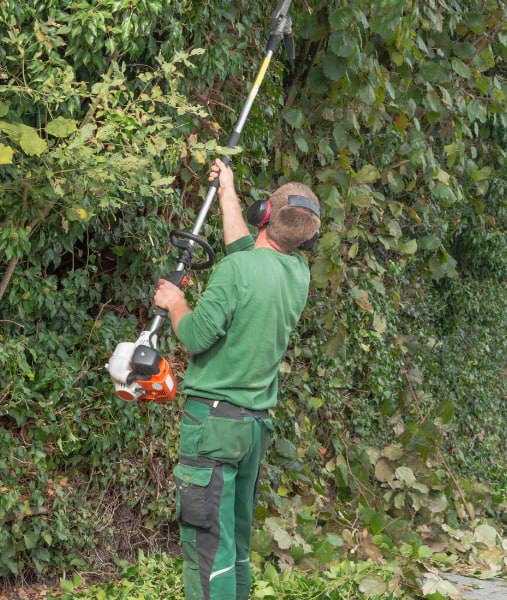How to Assess Hedge Health Before Cutting

Introduction: At Uckfield Tree Surgeons, we understand that hedge cutting is more than just a routine task—it’s a crucial part of maintaining the overall health and appearance of your garden. Before you start trimming, it’s essential to assess the health of your hedges to ensure that you’re not causing unnecessary harm. In this guide, we’ll walk you through the steps to properly evaluate the condition of your hedges before cutting.
Why Assess Hedge Health?
Assessing the health of your hedges before cutting is vital for several reasons:
- Promotes Healthy Growth: Ensures that you’re supporting the natural growth patterns of the hedge.
- Prevents Disease Spread: Identifies and mitigates any diseases or pests that could spread through cutting.
- Optimises Aesthetic Appeal: Helps maintain the desired shape and density of your hedge.
- Saves Time and Effort: This avoids unnecessary pruning, which can be both time-consuming and detrimental.
Steps to Assess Hedge Health
- Visual Inspection
Start with a thorough visual inspection of your hedge. Look for the following signs:
- Leaf Colour and Texture: Healthy hedges typically have vibrant green leaves. Yellowing, browning, or wilted leaves can indicate nutrient deficiencies, disease, or pest infestations.
- Branch Health: Check for dead or dying branches, which can appear brittle, discoloured, or devoid of leaves. These branches should be pruned to promote overall hedge health.
- Growth Patterns: Assess whether the hedge is growing evenly. Uneven growth can suggest underlying health issues that need to be addressed before cutting.
- Check for Pests and Diseases
Inspect your hedge for signs of pests and diseases:
- Pests: Look for insects such as aphids, spider mites, or caterpillars. Check the undersides of leaves and along stems.
- Diseases: Common hedge diseases include powdery mildew, rust, and leaf spot. Symptoms can include white powdery deposits, rust-coloured spots, or blackened areas on leaves and stems.
- Assess Soil and Root Health
Healthy soil and roots are crucial for a robust hedge:
- Soil Moisture: Ensure the soil around the hedge is moist but not soggy. Dry soil can stress the hedge, while overly wet soil can lead to root rot.
- Root Inspection: If possible, gently examine the roots for signs of rot or damage. Healthy roots are firm and white, while unhealthy roots may be brown, mushy, or emit a foul odour.
- Evaluate Hedge Density
A dense hedge provides better privacy and aesthetic appeal:
- Thinning Areas: Look for areas where the hedge is sparse or thinning. These sections may require additional care, such as targeted fertilisation or disease treatment.
- Overall Thickness: Ensure that the hedge is thick and full. Thin, leggy growth can indicate a need for more light or nutrients.
- Test Soil Nutrients
Conduct a soil test to determine if your hedge is receiving the necessary nutrients:
- pH Levels: The ideal pH level for most hedges is between 6.0 and 7.0. Adjust the soil pH if necessary to optimise nutrient availability.
- Nutrient Deficiencies: Identify any deficiencies in essential nutrients such as nitrogen, phosphorus, and potassium. Use appropriate fertilisers to address these gaps.
Pre-Cutting Preparation
Once you’ve assessed the health of your hedge, it’s time to prepare for cutting:
- Sharpen Tools: Ensure your pruning tools are sharp to make clean cuts, which promote faster healing and reduce the risk of disease.
- Plan Your Cuts: Decide which areas need trimming based on your health assessment. Focus on removing dead or diseased branches and shaping the hedge to encourage even growth.
- Timing: Choose the right time for cutting. Avoid trimming during extreme weather conditions or when the hedge is in active growth, as this can stress the plant.
Conclusion: Assessing the health of your hedge before cutting is a crucial step in maintaining a beautiful and thriving garden. By following these guidelines, you can ensure that your hedges remain healthy, vibrant, and well-shaped throughout the year.
Call us on: 01825 705493
Click here to find out more about Uckfield Tree Surgeons
Click here to complete our contact form and see how we can help you with your tree’s needs.